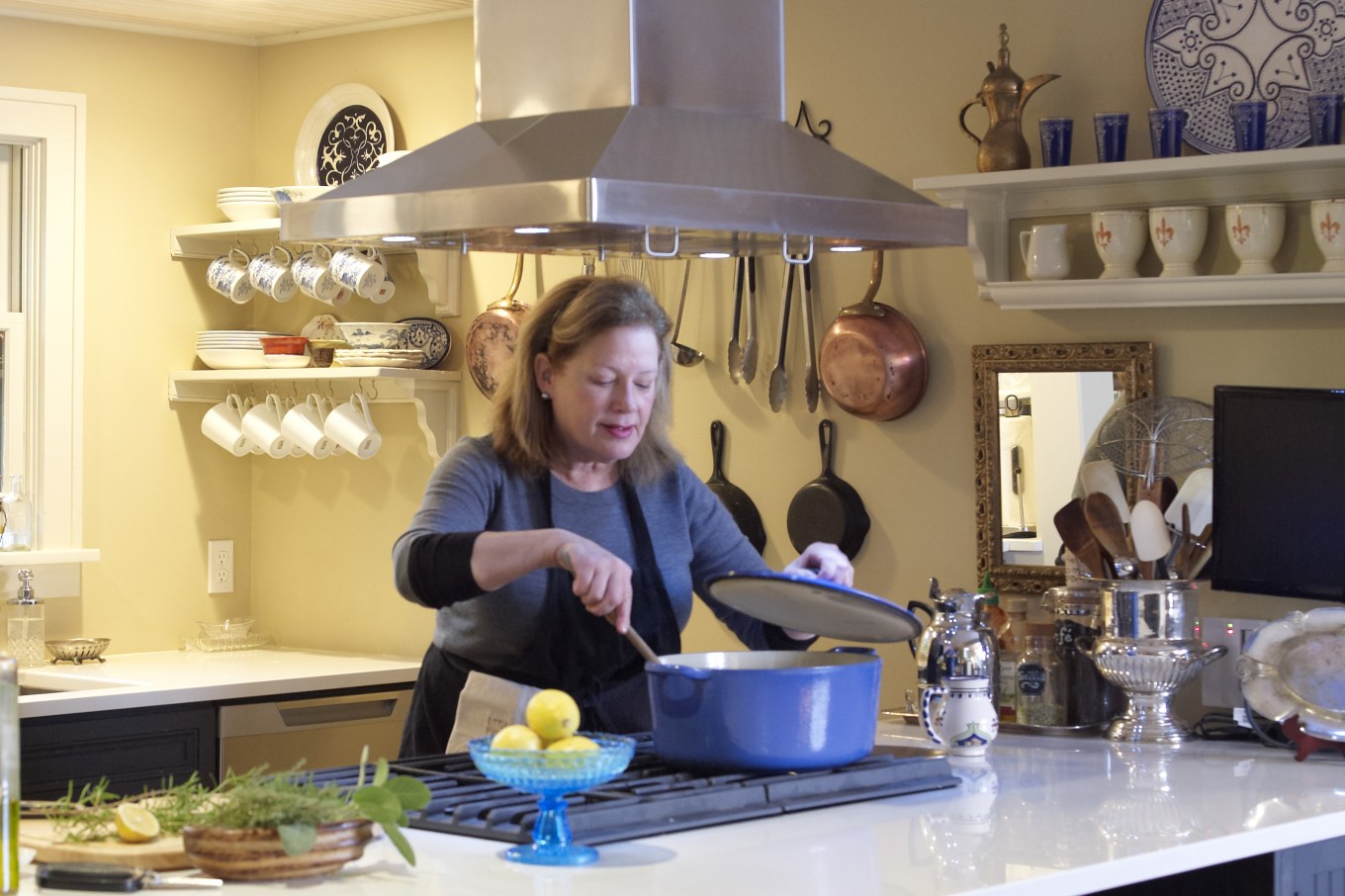For homeowners who love to cook, the kitchen is a sacred space. It needs an inviting ambiance and a practical workflow more than shiny new appliances or endless counter space. In fact, many professional chefs say they don’t need a massive kitchen to do their thing at home. “I want to turn around … not walk around,” says Austin Johnson, executive chef of The Krebs in Skaneateles, N.Y., and the former sous chef at The NoMad (located in Manhattan’s NoMad Hotel).
Here are expert tips from two chefs on how to build a kitchen for serious cooks:
Plan for More Than One Cook
The recent popularity of open floor plans is a boon for people who love to cook and entertain.
“You want a great social area,” Johnson says. “In my house, I want people to congregate in the kitchen, eat hors d’oeuvres, and drink some wine.” He suggests an island with a high top on one side “to promote conversation.” But don’t give up your serious workspace for the high top — create a nearby gathering area if you don’t have the space to expand an island.
Get in the (Work) Zone
There’s a reason the “kitchen work triangle” — with a strategically placed refrigerator, prep area, and cooking zone — is a common layout. “You want everything near to hand so you’re not hopping around all over the place,” Johnson says.
Plummer likes a “tight work space,” and has one work zone for each stage of the cooking process. She recommends putting all your most used utensils — spatulas, wooden spoons, potato masher, etc. — into a container on the counter area on which you’ll be cooking the most.
Plummer’s pet peeve is a trash can in the middle of high traffic areas. “Two trash bins are great,” she says. “One by the prep area and another where people might be walking by — but not get in your way as you’re cooking.” You don’t want someone leaning underneath you at the sink — a common spot for trash — while you’re in go mode.
Buy the Right Stuff
Both chefs warn not to compromise on the quality of your equipment, but that doesn’t mean spending money on commercial cookware. In fact, avoid it altogether. Plummer goes for higher-end residential appliances. “They throw off less heat,” she says. “They’re safer, generally.”
Consider Your Counters
For counters, Johnson is all about durable materials like soapstone. “It’s really soft, but only if you start digging a knife into it,” he says. “It can be scratchy, but it can withstand 1,200 degree heat without cracking.” At The Krebs, he says, they roll pasta all over the soapstone counter every day. “I love to watch the counter as it ages and grows in character.”
Plummer, too, says to invest in something durable. Instead of granite, which scratches easily and requires lots of upkeep, she has a compressed, recycled quartz countertop. “It sustains high heat,” she says, “and there are so many choices you can get the look you want.”
When You’re Organized, Your Dream Kitchen Doesn’t Have to be Big
There’s no right way to set up a home kitchen — all that matters is that it works for the way you prefer to cook and bake. Johnson worked for three years on a fishing boat in Alaska where he cooked for five people in a 12-foot-by-6-foot kitchen.
“[It] was layed out perfectly — my refrigerator on my left, the sink next to the open window so I could look out to the ocean, to the right was a stove and burners and to the right of that my plating station,” he says. “A dream kitchen doesn’t have to be a big kitchen. My dream kitchen is on a sailboat.”
Related:
